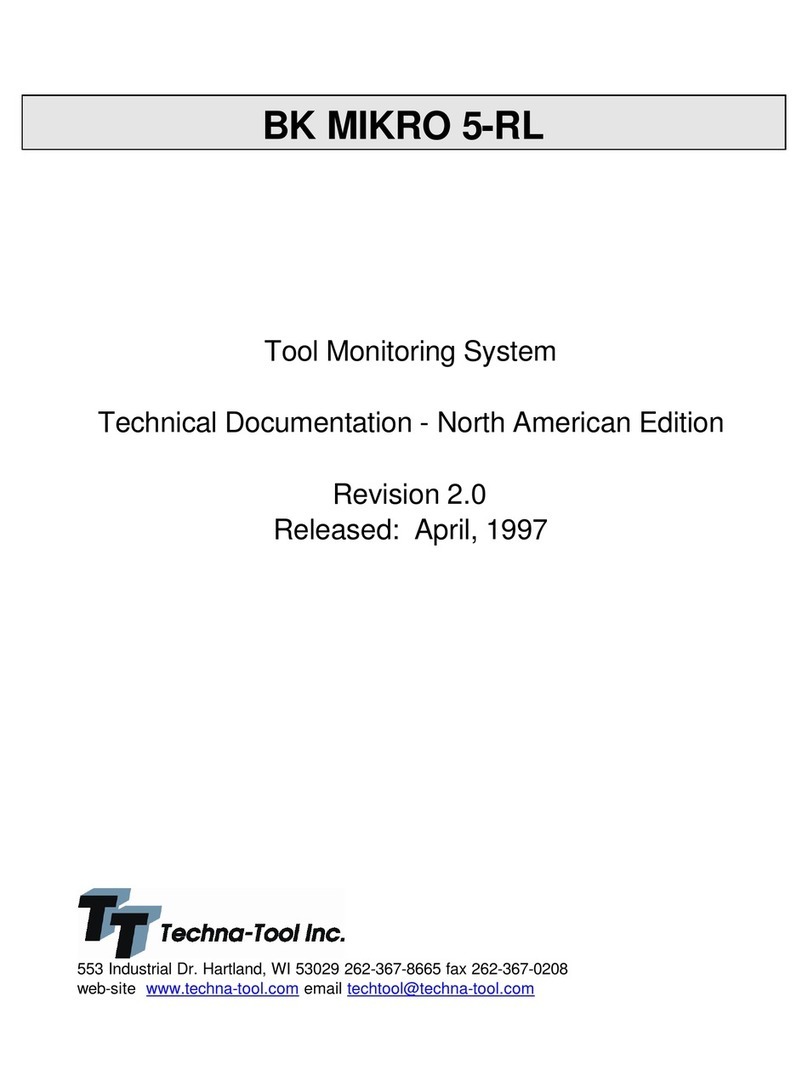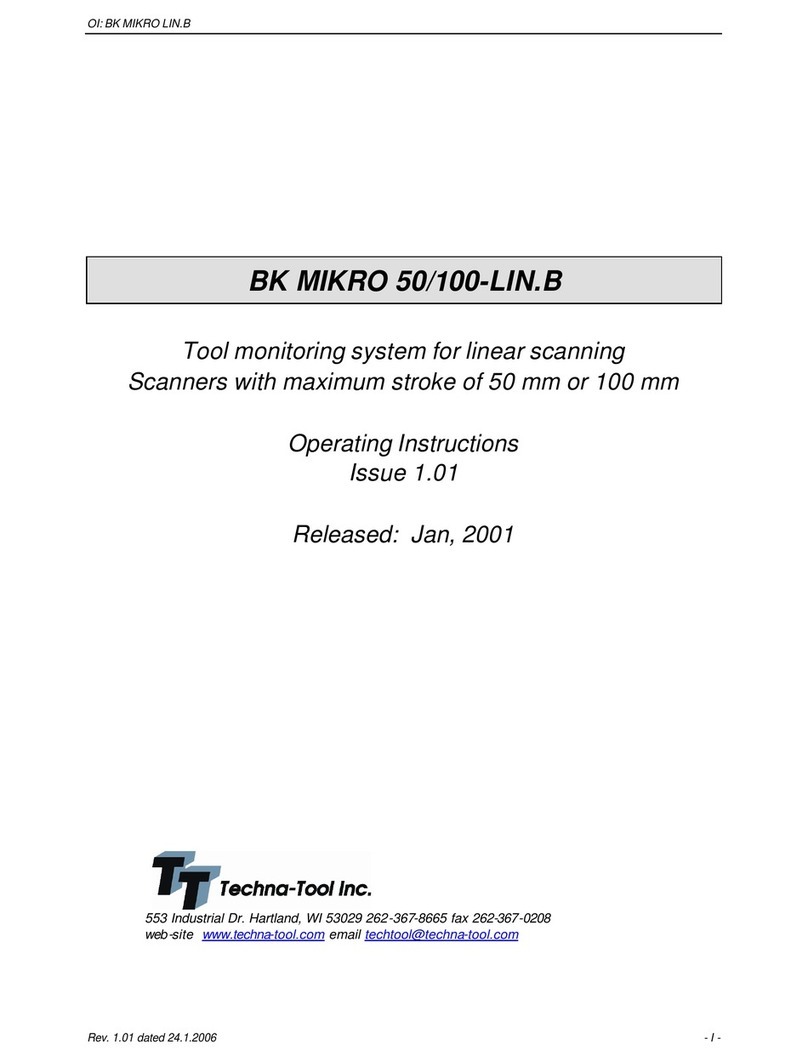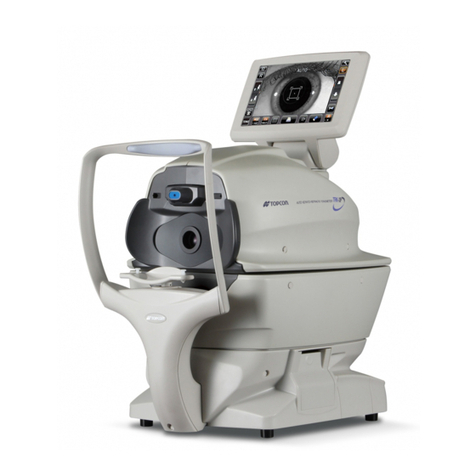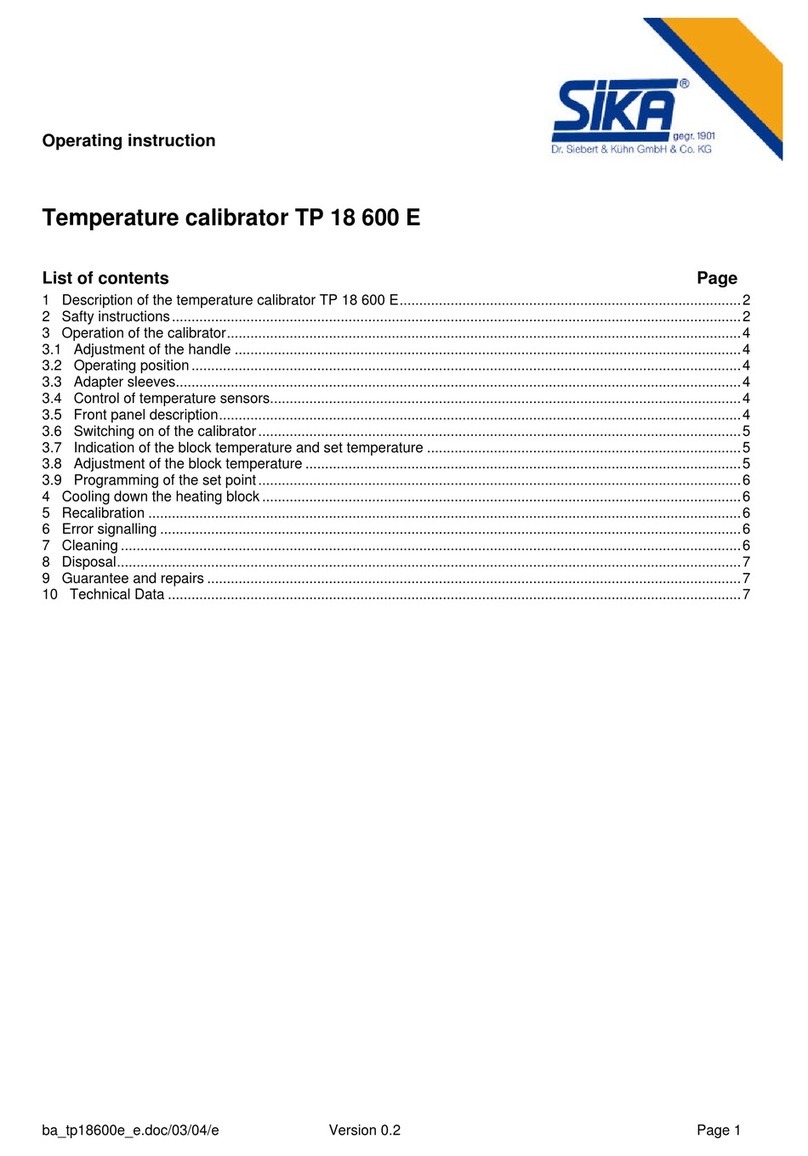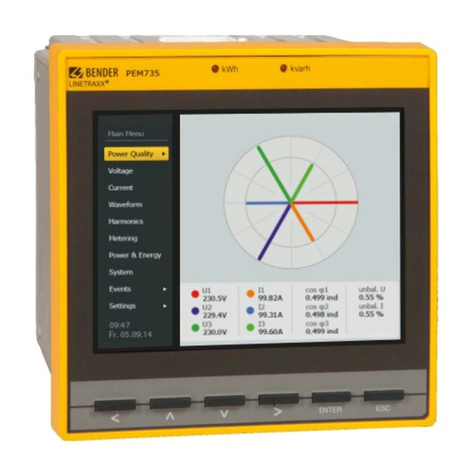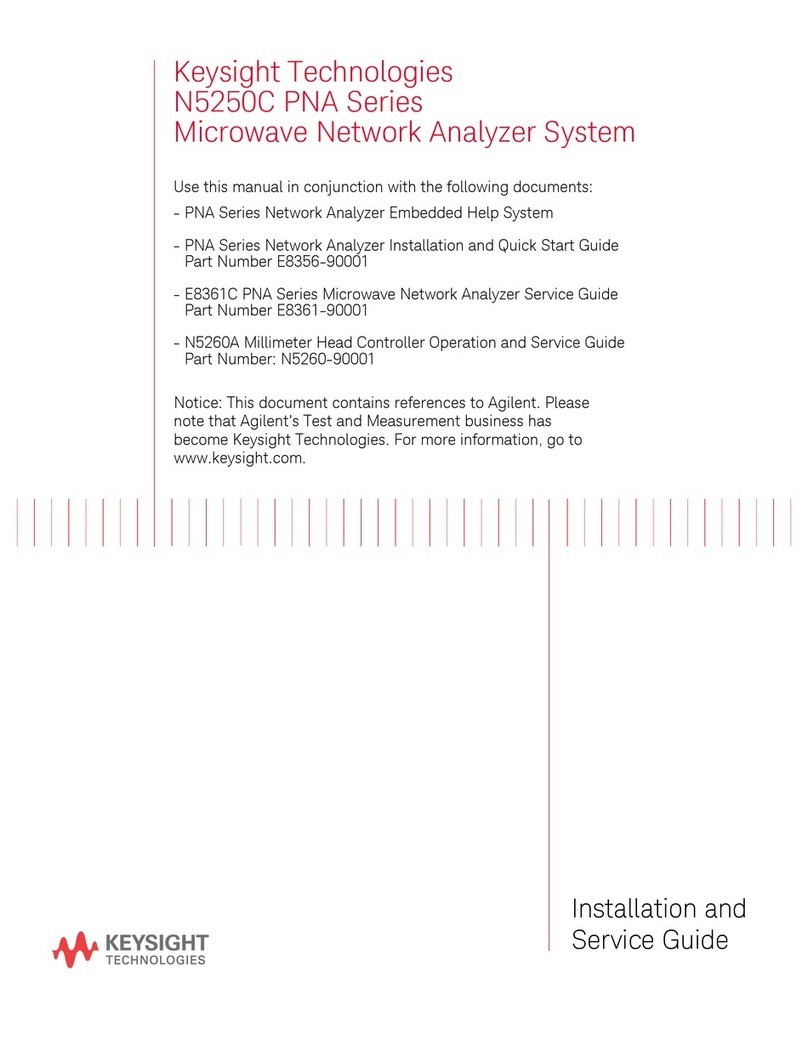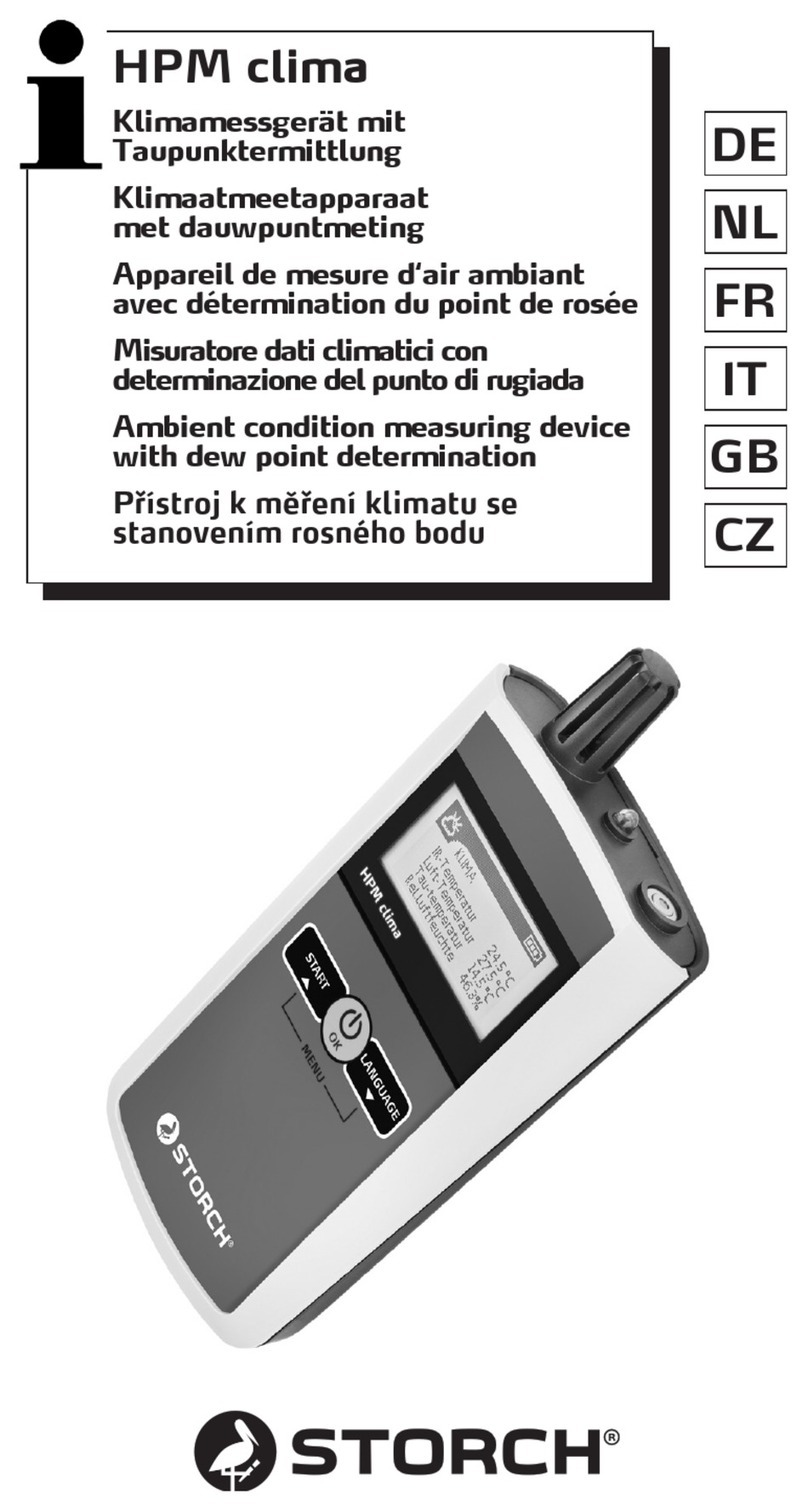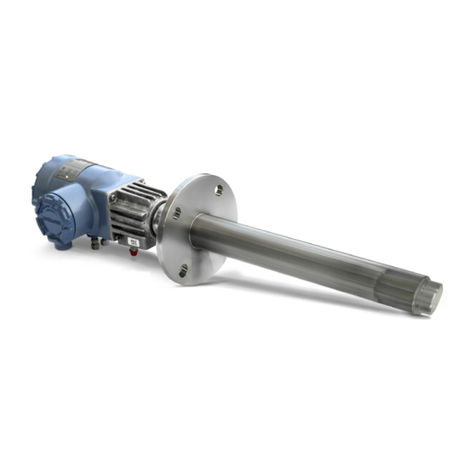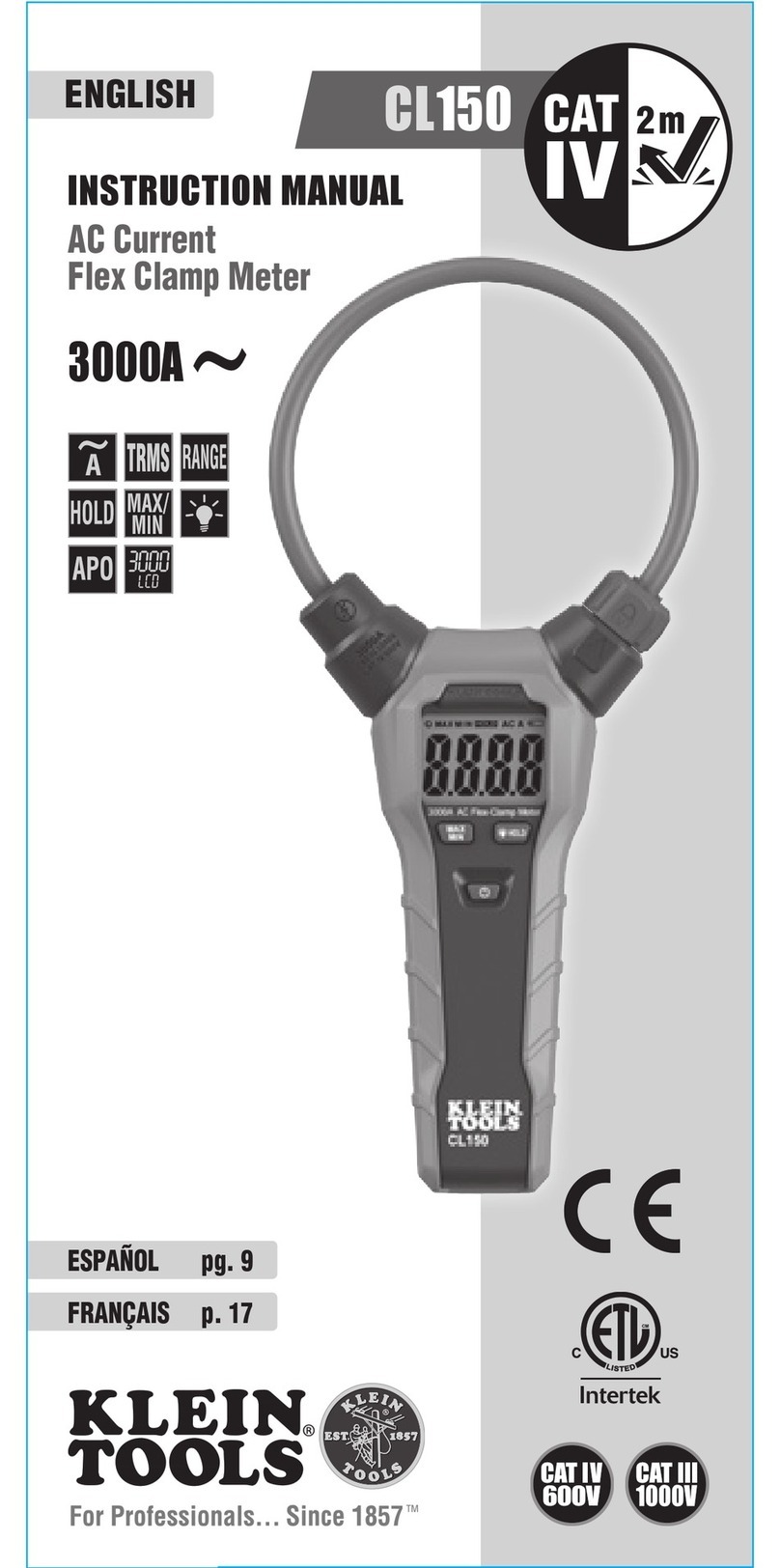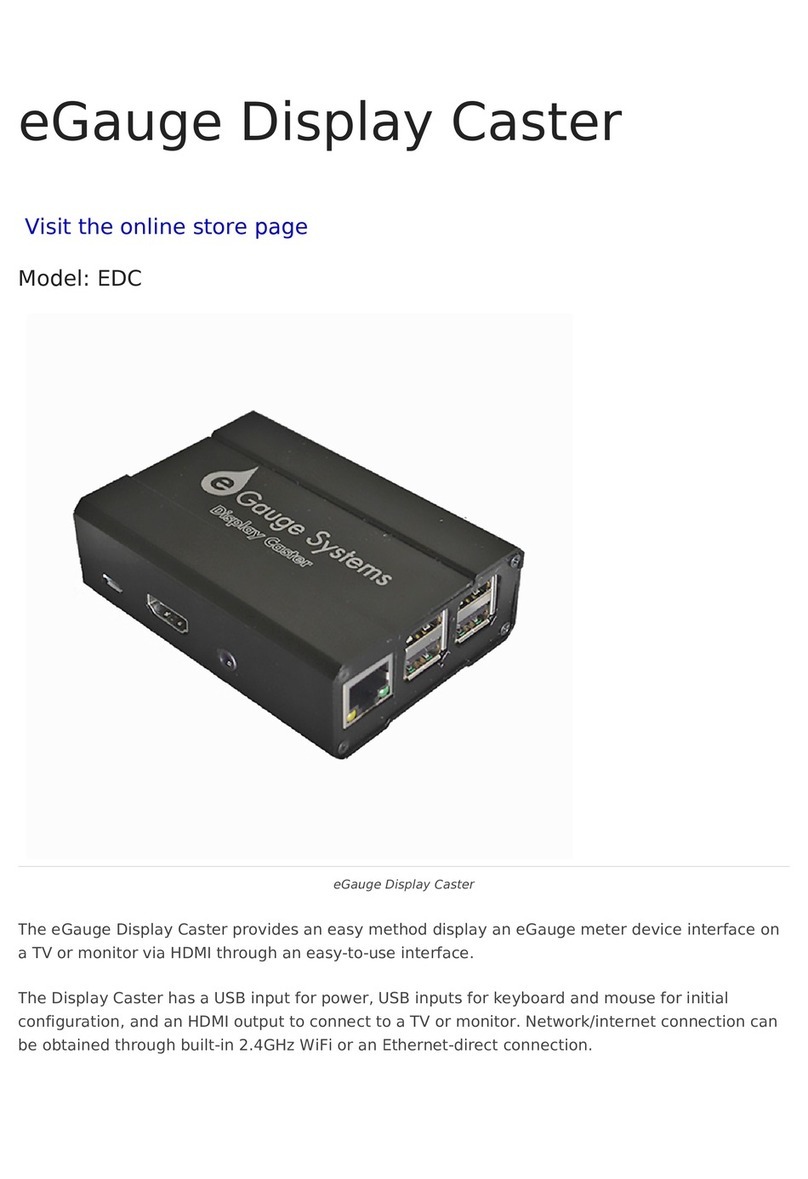Techna-Tool BK MIKRO 7 Guide

BK MIKRO MODEL 7 & 7RL
Monitoring System for Tool, Object
and Free Space Monitoring
Technical Documentation –North American Edition
Released: October 2003
553 Industrial Dr. Hartland, WI 53029 262-367-8665 fax 262-367-0208
web-site www.techna-tool.com email techtool@techna-tool.com


OI: BK MIKRO 7 Contents
Rev. 2.00 dated 20.01.2006 Page 1
Contents
1Basic Information................................................................................................................4
1.1 Warranty and Liability............................................................................................................4
1.2 Intended Use.........................................................................................................................4
1.3 Copyright..............................................................................................................................4
1.4 Hazards................................................................................................................................5
1.4.1 Electrical Hazards.................................................................................................................6
1.4.2Mechanical Hazards ..............................................................................................................6
1.4.3 Thermal Hazards ...................................................................................................................6
1.5 Compliance with Safety Notes and Regulations........................................................................7
1.6 Commitment.........................................................................................................................7
1.7 Qualification..........................................................................................................................7
1.8 Transportation, Storage, Disposal ...........................................................................................8
1.9 Suitable Fire Extinguishing Agents..........................................................................................8
1.10 Check List for Correct Handling...............................................................................................9
2Characteristics..................................................................................................................10
3System Components .........................................................................................................11
3.1 Control unit.........................................................................................................................11
3.1.1 Characteristic properties ......................................................................................................11
3.1.2 Technical data.....................................................................................................................12
3.1.3 Connections........................................................................................................................13
Power supply......................................................................................................................13
Control inputs......................................................................................................................13
Selection inputs..................................................................................................................14
Relay outputs......................................................................................................................15
3.1.4 Light-emitting diodes............................................................................................................15
3.1.5 Rotary switches ..................................................................................................................16
3.1.6 Toggle switches ..................................................................................................................17
"Scanning intensity" switch..................................................................................................17
"Normally open contact / Normally closed contact" switch......................................................17
"Object monitoring / Free space monitoring" switch................................................................17
"Clockwise / Counter-clockwise" switch (CW/CCW)...............................................................18
"Tolerance range" switch......................................................................................................18
"Scanner" switch.................................................................................................................18
3.1.7 Notes on technical safety.....................................................................................................19
3.2 Scanner..............................................................................................................................20
3.2.1 Characteristic properties ......................................................................................................20
BK7SC –Scanner with mechanical backstop.........................................................................20
BK7RLSC –Scanner without mechanical backstop ................................................................20
3.2.2 Technical data.....................................................................................................................21
3.2.3 How to change ....................................................................................................................22
3.3 Connection cable.................................................................................................................22
4Mode of Operation ............................................................................................................23
4.1 Scanning process................................................................................................................23
"Start" cycle with CW travel..................................................................................................23
4.2 Output of results..................................................................................................................24
4.3 Return travel monitoring........................................................................................................24
5BK MIKRO 7 with scanner BK7SC –Scanning in one direction.........................................25
5.1 Teach mode = monitoring with learning function......................................................................26
5.1.1 "Teach-in", the learning cycle...............................................................................................26

Contents OI:BK MIKRO 7
Page 2Rev. 2.00dated 20.01.2006
Learning cycle with CCW travel ............................................................................................26
5.1.2 "Start", the real scanning process.........................................................................................26
5.2 Switch mode = monitoring with setting scanning range ...........................................................27
5.2.1 Control operation "Object monitoring"....................................................................................27
5.2.2 Control operation "Free space monitoring" .............................................................................27
5.2.3 Deflection of wand ...............................................................................................................28
5.2.4 Examples for range settings.................................................................................................28
6BK MIKRO 7 with scanner BK7RLSC –Scanning in both directions..................................29
6.1 Teach mode = monitoring with learning function.....................................................................30
6.1.1 "Teach-in", the learning cycle...............................................................................................30
Learning cycle with CW-CCW travel......................................................................................30
6.1.2 "Start", the real scanning process.........................................................................................31
"Start" cycle with CW-CCW travel using teach mode..............................................................31
6.2 Switch mode = monitoring with setting scanning ranges .........................................................32
6.2.1 Reference procedure............................................................................................................32
6.2.2 Control operation "Object monitoring"....................................................................................33
"Start" cycle with CW-CCW travel using switch mode.............................................................33
6.3 Scanning in one direction with scanner BK7RLSC..................................................................33
7Cycle Times......................................................................................................................34
8Status Indication...............................................................................................................35
8.1 Yellow LED.........................................................................................................................35
8.2 Red LED / Green LED.........................................................................................................35
8.3 Error messages –Flashing red and green LED......................................................................36
8.4 Installation Notes ................................................................................................................37
8.5Control voltage connection ...................................................................................................37
8.6 Mounting bracket ................................................................................................................38
8.7 Interference prevention.........................................................................................................38
9Ordering Information ........................................................................................................39

OI: BK MIKRO 7 Table of Figures
Rev. 2.00 dated 20.01.2006 Page 3
Table of Figures
Fig. 3-1: Control unit –Connections.....................................................................................................11
Fig. 3-2: Control unit –Dimensions......................................................................................................12
Fig. 3-3: Control unit –Light-emitting diodes.........................................................................................15
Fig. 3-4: Control unit –Rotary switches ...............................................................................................16
Fig. 3-5: Control unit –Toggle switches ...............................................................................................17
Fig. 3-6: Definition of the rotation direction............................................................................................18
Fig. 3-7: Range of tolerance................................................................................................................18
Fig. 3-8: Scanner...............................................................................................................................21
Fig. 3-9: Connection cable –Pin configuration......................................................................................22
Fig. 4-1: "Start" cycle for scanning in one direction...............................................................................23
Fig. 5-1: Handling BK MIKRO 7 with scanner BK7SC............................................................................25
Fig. 5-2: "Teach-in" for scanning in one direction...................................................................................26
Fig. 5-3: Range settings using rotary switches for scanning in one direction............................................28
Fig. 6-1: Handling BK MIKRO 7 with scanner BK7RLSC........................................................................29
Fig. 6-2: "Teach-in" for scanning in both directions................................................................................30
Fig. 6-3: "Start" cycle for scanning in both directions ............................................................................31
Fig. 6-4: Range setting using rotary switches for scanning in both directions...........................................33
Fig. 8-1: Control voltage connection.....................................................................................................37
Fig. 8-2: Mounting bracket..................................................................................................................38
©
Copyright MSC Tuttlingen GmbH, 78532 Tuttlingen, 2003
These operating instructions are available as item no. 68 36 231.
The publishers reserve the right to change the technical contents of this documentation
without prior notice.

BK Mikro 7 Manual OI:BK MIKRO 7
Page 4Rev. 2.00dated 20.01.2006
1Basic Information
1.1 Warranty and Liability
Our “Terms and Conditions of Sale" shall apply as standard. All warranty and liability claims in the
event of personal injury and/or damage to property shall be excluded if they can be traced to one or
several of the following causes:
•Use outside the intended scope of the equipment design.
•Incorrect installation, commissioning, repair, and maintenance of the equipment.
•Operation of the equipment with defective safety facilities or incorrectly fitted or non-functional
safety and protective facilities.
•Non-compliance with the notes in these operating instructions concerning transportation, storage,
fitting, commissioning, operation, limit values, and maintenance.
•Unauthorized changes.
•Insufficient monitoring of parts subject to wear.
•Cases of catastrophe due to action by foreign bodies and acts of God.
In the case of software, warranty is further excluded in respect of:
•defects which are unavoidable considering the state of the art existing at the time of delivery or
performance and the intended use and price of the equipment, with the exception of such faults
whose acceptance would be unreasonable for the customer,
•software copies not supplied by us,
•software changed by the customer, even if the defect occurs in a part which has not been
changed, unless it can be proven that the occurrence of the defect is completely unrelated to the
change.
1.2 Intended Use
BK MIKRO7 is a control system to be used for tool, object and free space monitoring applications.
We will not accept any liability whatsoever for any and all damage caused by a different or
additional use of this equipment.
Use within the intended scope of the design also includes:
•compliance with all instructions and notes contained in these operating instructions, and
•observance of all inspection, service, and maintenance intervals.
1.3 Copyright
These operating instructions are intended for the operator and the operator’s personnel only.
They contain instructions and notes which may not be disclosed to third parties, either in
full or in part, by
•reproduction,
•circulation, or
•any other means.
Non-compliance may lead to prosecution under criminal law.

OI: BK MIKRO 7 BK Mikro 7 Manual
Rev. 2.00 dated 20.01.2006 Page 5
Safety
Explanation of Symbols and Notes
Immediate Danger
for life and limb of personnel and others.
Non-compliance will cause death or
most serious (crippling) injury.
Hazardous Situation
for life and limb of personnel and others.
Non-compliance may cause death or
most serious injury.
Potentially Hazardous Situation
Non-compliance may cause light injury;
also warning against damage to property.
Notes on Correct Handling
Non-compliance may cause damage to the product
and/or damage to parts/items in the vicinity.
Environmental Protection
Non-compliance may have an impact on the environment.
1.4 Hazards
The system BK MIKRO has been built to the technical state of the art and all recognized technical
rules. Nevertheless, its use may cause hazards for life and limb of the user or third parties, or have
a detrimental effect on the equipment or other property.
The system is to be used only
•within its intended design limits
•in a technically safe condition.
Faults which may have a detrimental effect on safety are to be remedied immediately.
Until such remedy is effected, the equipment may not be operated.
Danger
Warning
Caution

BK Mikro 7 Manual OI:BK MIKRO 7
Page 6Rev. 2.00dated 20.01.2006
1.4.1 Electrical Hazards
Any work on the electrical power supply is to be carried out by a specialist
electrical engineer only.
Switch off mains supply before opening up your equipment in order to avoid any
direct electrical contact.
If work needs to be carried out on live components, a second person is
to provide assistance and operate the mains switch in any emergency.
An open casing constitutes a health hazard due to high frequency electrical and
magnetic fields. These HF electrical and magnetic fields might be hazardous for
anyone with heart problems (heart pacemaker).
1.4.2 Mechanical Hazards
There are injury hazards caused by:
•Cuts caused by component edges
•Stabs by contact with moving wand
•Skin tears from touching the boards on their soldered sides
•Injuries to fingertips from inserting jumpers
Sensitive people may react allergically in the event of:
their skin coming into contact with metal parts
(soldering tin, metal brackets, screws, wires, etc.).
1.4.3 Thermal Hazards
Avoid any contact with DC/DC transducers, multiplexers, high performance ICs,
transistors, voltage controls, etc. during operation and within 30 minutes after
switching off the mains supply and external voltages.
Non-compliance with this instruction may cause burns.
Danger
Caution
Warning
Warning

OI: BK MIKRO 7 BK Mikro 7 Manual
Rev. 2.00 dated 20.01.2006 Page 7
1.5 Compliance with Safety Notes and Regulations
The fundamental requirement for safe handling and trouble free operation is an understanding
of the basic safety notes and safety regulations.
These operating instructions contain the most important notes for safe operation of the system BK
MIKRO.
The content of these notes –safety notes in particular –is to be complied with by all who work with
this machine.
In addition, please observe all national regulations in respect of:
•accident prevention
•setting up electrical and mechanical plant
•radio interference suppression
1.6 Commitment
All personnel tasked with jobs at the BK MIKRO undertake,
before starting work,
•to observe the fundamental regulations on health and safety at work as well as on accident
prevention,
•to read the chapter on safety as well as all warning notes contained in these operating
instructions, and to confirm by their signature, that they have read and understood these.
At regular intervals there will be an inspection regarding this safety-conscious working of personnel.
1.7 Qualification
Trained specialist personnel only may work on the BK MIKRO.
Personnel competences are to be clearly established with regard to mounting, commissioning/start-
up, operation, servicing, and maintenance.
Trained specialist personnel only may carry out the following activities:
•installation
•commissioning
•operation
•maintenance
Trainee personnel may work on the machine only when supervised by an experienced person.

BK Mikro 7 Manual OI:BK MIKRO 7
Page 8Rev. 2.00dated 20.01.2006
1.8 Transportation, Storage, Disposal
Transportation
During transportation damage may occur.
Ensure transportation in original packaging only.
Storage
Incorrect storage might cause defects to occur.
Please note the details provided in "Technical Data".
Disposal
Electronic scrap has a negative impact on the environment.
To avoid any such impact on the environment, this equipment should only be
disposed of via the proper channels for the recycling of electronic material.
Do not dispose of this equipment in the waste bin !
1.9 Suitable Fire Extinguishing Agents
In the event of fire hazardous
vapors and gases may occur.
In the event of fire
•disconnect system from all external connections
•disconnect mains plug
For extinguishing purposes, never use the following:
•water
•powder extinguisher (not suitable for electrical equipment)
•halon fire extinguisher (these damage theozone layer)
Only use:
•residue-free carbon dioxide fire extinguishers
Warning

OI: BK MIKRO 7 BK Mikro 7 Manual
Rev. 2.00 dated 20.01.2006 Page 9
1.10 Check List for Correct Handling
Note:
If you forget to read the instructions provided for a particular step,
or if you peruse the instructions too quickly, you may act incorrectly
due to ignorance.
How to avoid incorrect action:
•Thoroughly read all instructions
•Carry out the instructions
•Confirm that the instructions have been carried out
This is how you never lose track:
þFollowing each step actually carried out,
immediately check the relevant box !
¨Check delivery
¨Physical environmental and operating conditions
¨Energy requirement: type, quality, quantity
¨Protective measures
¨Installation
¨Connection of peripheral devices
¨Software

BK Mikro 7 Manual OI:BK MIKRO 7
Page 10 Rev. 2.00dated 20.01.2006
2Characteristics
BK MIKRO 7 is a control system suitable for tool as well as for object and free space monitoring
applications.
The complete BK MIKRO 7 system is comprised of:
•a control unit,
•a sensor (scanner),
•a connection cable.
BK MIKRO 7 is based on existing design concepts for tool, object and free space monitoring and
can be used universally for different types of monitoring by the integration of multifarious functions:
•Tool monitoring
Monitoring of the scanning position whose precise location has been previously entered by
"Teach-in", e.g. to carry out a tool check before each working cycle.
•Object monitoring, free space monitoring
Monitoring a scanning range freely selectable via two adjusting switches,
e.g. to carry out tool checks for tools with varying diameters (object monitoring),
or for ejection checks (free space monitoring).
Two types of scanners are available for various demands.
From this two different monitoring systems result.
BK7SC: Scanner with mechanical backstop.
BK7RLSC: Scanner without mechanical backstop.
Principle of operation
The wand of the scanner scans tools, objects or critical process spaces free of potential,
in line with machine cycles.
A control unit equipped with a micro-computer triggers the movement of the wand upon an external
signal and passes the scanning result on to the machine control via relay contacts.
The galvanically isolated inputs and outputs guarantee a high degree of operational safety and
protection against interferences.
Further features
•Scanning in one direction or in both directions
•Scanning in clockwise (CW) or counter-clockwise (CCW) direction
•Two steps for scanning intensity
•Output relay contacts selectable as normally open or normally closed
•Two ranges of tolerance for "O.K." message
•Indication of the scanning result by two LEDs "O.K." and "K.O." on the control unit
•Detection of cable breaks

OI: BK MIKRO 7 BK Mikro 7 Manual
Rev. 2.00 dated 20.01.2006 Page11
3System Components
3.1 Control unit
3.1.1 Characteristic properties
The control unit is available in three models preconfigured for different supply voltages.
The relevant version will be marked on the rating plate: 24 VDC, 120 VAC, 230 VAC.
On its front panel, the control unit is fitted with plug-in screw terminals to connect all machine
inputs and outputs, supply voltage, and the scanner.
•The screw terminals have been arranged on two plug-in terminal blocks. These blocks
are keyed so that they cannot be accidentally plugged into the wrong socket.
•When in operation, plastic caps cover the screws in the front. Wires to be connected are routed
from the top or bottom of the unit.
The scanner will be connected via a 6-wire cable to the scanner socket of the control unit.
Fig. 3-1: Control unit –Connections
Note:
These plugs may only be inserted or removed when the power supply has been
disconnected.
Scanner socket
Control inputs
Power supply and
Control voltage
24 VDC Selection inputs
(scanning direction)
These terminals must not be connected!
"o.k."
relay
"k.o."
relay
Power
supply
230 VAC
or
120 VAC
Scanning wand 250 mm
(24 VDC);
option standard: open
k.o. o.k.
Scanner
Com
24 V DC
0P1 P2
90
Start Teach S1 S2 S3
AC IN
L1 N
O
R
270
180
0
90
180
BK MIKRO 7
F
L
Caution

BK Mikro 7 Manual OI:BK MIKRO 7
Page 12 Rev. 2.00dated 20.01.2006
3.1.2 Technical data
Housing Insulating material housing, protection class II, built-in unit
Protection type IP 20
Dimensions (W x H x D) 45 mm x 75 mm x 107.5 mm
Case mountings Sectional rail, 35 mm, to DIN EN 50022
Power supply voltage
(depending on model) 24 VDC ±20% PELV1) Imax = 0.25 A
120 VAC Imax = 0.05 A
230 VAC Imax = 0.025 A
Power consumption 6 VA max.
Control voltage (int./ext.) 24 VDC ±20% PELV1)
Inputs Galvanically isolated
–Input current 5 mA approx.
–Pulse duration 6 ms min.
Switched outputs 2 x 250 VAC / 30 VDC, 2 A max.
Making/breaking capacity 500 VA / 60 W (max.)
10 mA min. at 10 V
Operational life of relay 5 x 107switching cycles
Connections Plug-in screw terminals for connecting
–power supply
–control inputs
–selection inputs
–relay outputs
Scanner socket to DIN 45322, 6 pin
Climatological conditions Classification 3K3 under EN 50178
Ambient temperature 0 ºC to +50 ºC
Storage temperature –25 ºC to +80 ºC
Fig. 3-2: Control unit –Dimensions
Note:
The control unit of BK MIKRO 7 is a built-in unit!
1) PELV = Protected Extra Low Voltage
The voltage applied must meet the requirements for an extra low function
potential with safe disconnection (PELV).
107.5
110
75
78
45
General tolerances
ISO 2768 – mK
Warning

OI: BK MIKRO 7 BK Mikro 7 Manual
Rev. 2.00 dated 20.01.2006 Page13
3.1.3 Connections
Power supply
"24 VDC" model :
•"+" 24 VDC terminal
Supply voltage input 24 VDC
•"–" 24 VDC terminal
Reference potential of 24 VDC supply voltage
"120 VAC" and "230 VAC" models 2):
•"L1" terminal
Supply voltage input,
depending on model: 120 VAC or 230 VAC
•"N" terminal
Supply voltage input,
depending on model: 120 VAC or 230 VAC
•"+" 24 VDC terminal
Control voltage for "Start" and "Teach" controlling inputs
24 VDC unregulated, output current 0.1 A max.
If an external control voltage is applied, this terminal is not connected.
•"–" 24 VDC terminal
When using the internal control voltage, this terminal must be connected to the "Com" control
inputs terminal.
If an external control voltage is applied, this terminal is not connected.
Note:
2) Alternatively, "120 VAC" and "230 VAC" models may also be supplied with 24
VDC.
In this case, "L1" and "N" terminals must not be connected.
"+24 VDC" and "–24 VDC" terminals are to be connected as described above
for "24 VDC" model.
Control inputs
•"Com" terminal
Reference potential for control inputs and selection inputs
•"Start" terminal
An input level of +24 VDC relative to "Com" terminal will trigger a "Start" cycle
(the real scanning process).
•"Teach" terminal
An input level of +24 VDC relative to "Com" terminal will trigger a learning cycle
(the "Teach-in").

BK Mikro 7 Manual OI:BK MIKRO 7
Page 14 Rev. 2.00dated 20.01.2006
Selection inputs
•"S1" terminal
"S2" terminal
"S3" terminal
The input signal (static) of +24 VDC relative to "Com" terminal must be stable during 10 ms min.
before "Teach" or "Start".
The input S3 must be connected at a wand length of 250 mm. Concerning shorter wands, S3
remains unconnected. By connecting S3, the wand is slower and therefore it oscillates less.
S1/S2 selection inputs determine scanning direction !
The direction of scanning depends on connected scanner with corresponding switch position.
The meaning of "Clockwise/Counter-clockwise" toggle switch position on control unit may be
changed by corresponding S1/S2 input signals.
S1 and S2 may be open. Then is: S1=0, S2=0.
Scanner BK7SC Scanner BK7RLSC
S1 S2 „CW/CCW“
Scanning Scanning
Default
setting è
00RCW CW-CCW
00LCCW CCW-CW
10RCW CW 2)
10LCW 1) CW 1) 2)
01RCCW 1) CCW 1) 2)
01LCCW CCW 2)
11RCCW 1) CCW-CW 1)
11LCW 1) CW-CCW 1)
Note:
Default setting: S1 and S2 are not connected.
1) Scanning direction differs from "CW/CCW" switch setting:
S1/S2 inputs change meaning of toggle switch.
2) Stop position must be defined by a “Teach-in” in both directions or by a
reference procedure in both directions. Missing stop position causes an error
message, and pulses on control inputs are ignored.

OI: BK MIKRO 7 BK Mikro 7 Manual
Rev. 2.00 dated 20.01.2006 Page15
Relay outputs
The terminals have been designed as dry relay contacts. By switch selection, they may be
configured as either normally open or normally closed.
The contacts have been designed for 250 VAC and, by additional internal circuits, protected against
inductive switch-off peaks of up to 19 W (2 ms).
•"K.O." relay terminals
These two terminals are used to indicate a fault message (K.O.).
•"O.K." relay terminals
These two terminals are used to indicate a no fault message, i.e. a good cycle (O.K.).
Note:
Relay as normally closed contact: active =open
inactive =closed
Relay as normally open contact: active =closed
inactive =open
When there is no power to the unit, the contacts always will be open.
Even when using relay as normally closed, they are
open
(like the active status) when the power supply is not
connected.
3.1.4 Light-emitting diodes
Three light-emitting diodes (LEDs) on the front panel provide information about the current status of
the BK MIKRO 7 monitoring system:
•Power supply / Status
Yellow LED to indicate supply voltage and status
•"K.O." relay
Red LED to indicate fault message
•"O.K." relay
Green LED to indicate no fault message
•Error messages
Flashing red and green LED to indicate
illegal switch settings and incorrect selection inputs
Fig. 3-3: Control unit –Light-emitting diodes
L1 N
AC IN
k.o. o.k.
LED
yellow LED
red LED
green

BK Mikro 7 Manual OI:BK MIKRO 7
Page 16 Rev. 2.00dated 20.01.2006
3.1.5 Rotary switches
The two rotary switches P1 and P2 on the control unit front panel are used to
•select the scanning mode ("Teach" or "Switch").
•set the angular positions of the ranges, noted in degrees,
that are controlled by object monitoring or free space monitoring.
The position settings are possible in steps of 22.5°.
Fig. 3-4: Control unit–Rotary switches
The figure shows the setup on delivery.
The meaning of the rotary switches is determined by the selected scanner together with the
corresponding "Scanner" switch position.
Toggle switch
Rotary switch Meaning
for scanner
BK7SC:P1=0
P2=0 Scanning using teach mode
P1 ≥0
P2 >P1
P2 ≤270
Scanning after setting scanning range
(object monitoring and free space monitoring),
at which:
P1=start position (without tolerance)
P2=end position (without tolerance)
for scanner
BK7RLSC:P1=0
P2=0 Scanning using teach mode
0<P1<360
0<P2<360 Scanning after setting scanning ranges
(only object monitoring, no free space monitoring),
at which:
P1=range CW (rotation from stop position)
P2=range CCW (rotation from stop position)
Ranges of tolerance selectable: ±3° and ±10°
Illegal switch settings
•P1=0 and P2≠0Error
•P1≠0 and P2=0 Error
will cause flashing red and green LED.
Minimum angle = 5°
The minimum distance between the object and the wand
must be an angle
of this value, so that scanning can start really, otherwise a
"K.O." fault
message will be indicated.
90
0
180
270 90
0
180
P1 P2

OI: BK MIKRO 7 BK Mikro 7 Manual
Rev. 2.00 dated 20.01.2006 Page17
3.1.6 Toggle switches
Using the six toggle switches arranged next to each other on the control unit front panel, the
following functions may be set.
Fig. 3-5: Control unit –Toggle switches
Note:
Setup on delivery: All switches are toggled to the right !
When using scanner BK7RLSC:"Scanner" switch to the left !
"Scanning intensity" switch
Speed and force of scanner's wand in its scanning range.
For "Teach-in" and "Start" cycle, in case of a good message, they amount to:
"Scanning intensity" Impact Forces
switch position
approx. 200 mN
approx. 500 mN
The values are valid for a wand of 150 mm length, measured on its scanning tip.
Note: If this switchis in the "low" position, the lower impact force of the scanner will protect the
wand from wear and tear.
"Normally open contact / Normally closed contact" switch
Mode of operation for the two output relays (see section "Relay outputs").
"Object monitoring / Free space monitoring" switch
"O.K." result for
–finding an object (object monitoring) or
–not finding an object (free space monitoring) in the scanning window.
Note: Free space monitoring is admissible only in combination with range setting by rotary
switches P1 and P2 and connected scanner BK7SC with toggle switch
set to "BK7SC".
Caution
O
R
F
L
High scanning intensity
Relay N.C.
(as normally closed contact)
Free space monitoring
Counter-clockwise travel
Large range of tolerance
Scanner TK7RL
Low scanning intensity
RelayN.O.
(as normally open contact)
Object monitoring
Clockwise travel
Lowrangeoftolerance
Scanner TK7A

BK Mikro 7 Manual OI:BK MIKRO 7
Page 18 Rev. 2.00dated 20.01.2006
"Clockwise / Counter-clockwise" switch (CW/CCW)
Direction of rotation, i.e. direction to which scanner moves starting from stop position.
Clockwise =When rotating to the right
Scanner viewed from behind (the connection side),
looking up length of scanner.
Fig. 3-6: Definition of the rotation direction
Note: Switch position may be changed by selection inputs S1, S2 and S3
(see table in section "Selection inputs").
"Tolerance range" switch
Range of tolerance for "O.K." message referred to the desired position,
i.e. position learned by "Teach-in" or set by switches:
small ±3°
great ±10°
Fig. 3-7: Range of tolerance
Note: No range of tolerance exists for scanning in one direction using switch mode.
"Scanner" switch
Selection of the scanner.
BK7SC Scanner BK7SC, i.e. use scanner with mechanical backstop!
BK7RLSC Scanner BK7RLSC, i.e. use scanner without mechanical backstop!
Stop position
Scanning wand
Scanner
Object
Desired position
great
small
This manual suits for next models
1
Table of contents
Other Techna-Tool Measuring Instrument manuals
Popular Measuring Instrument manuals by other brands

Haag-Streit
Haag-Streit AT 900 D Instructions for use
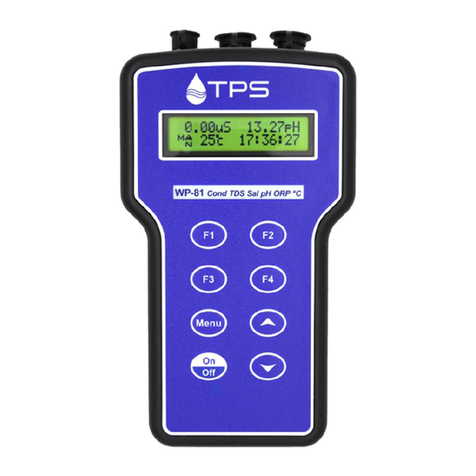
TPS
TPS WP-81 manual
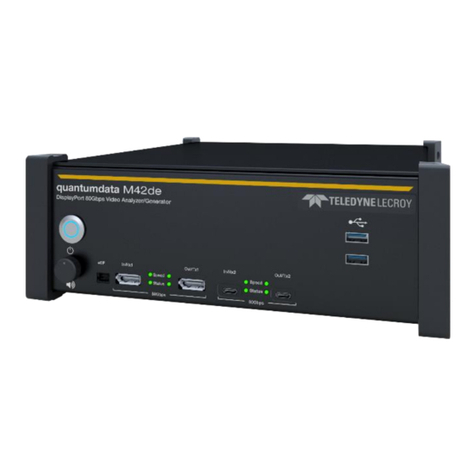
Teledyne Lecroy
Teledyne Lecroy M42de quick start guide
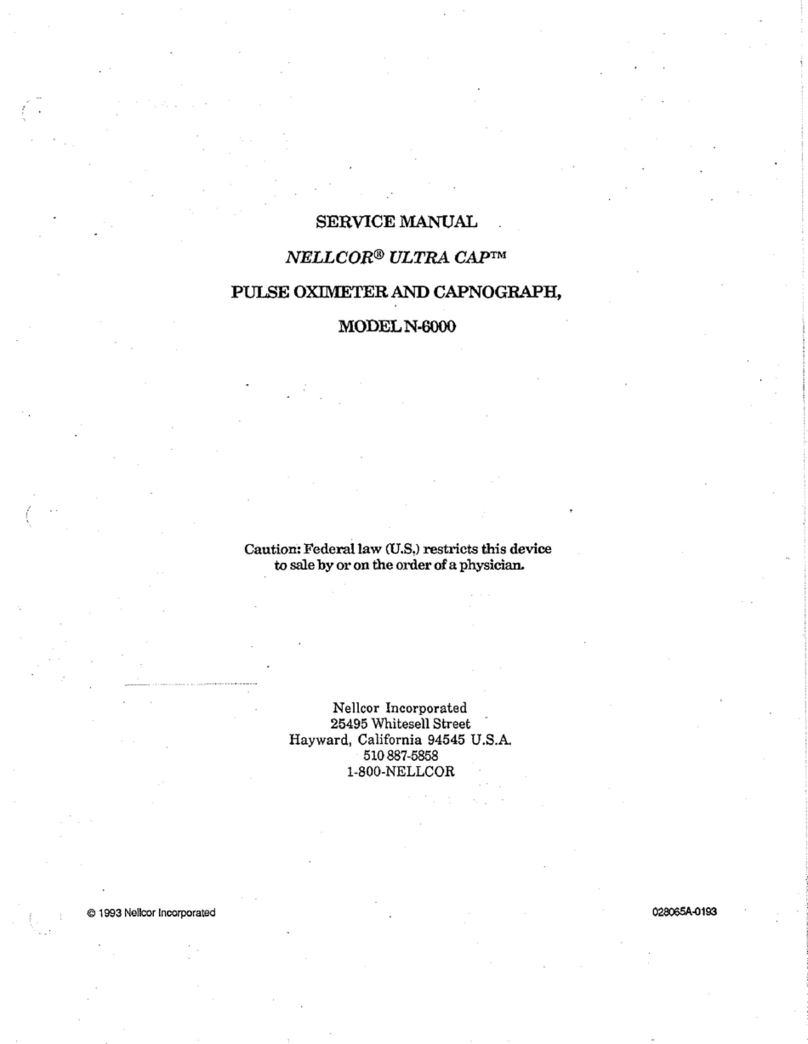
Nellcor
Nellcor ULTRA CAP N-6000 Service manual
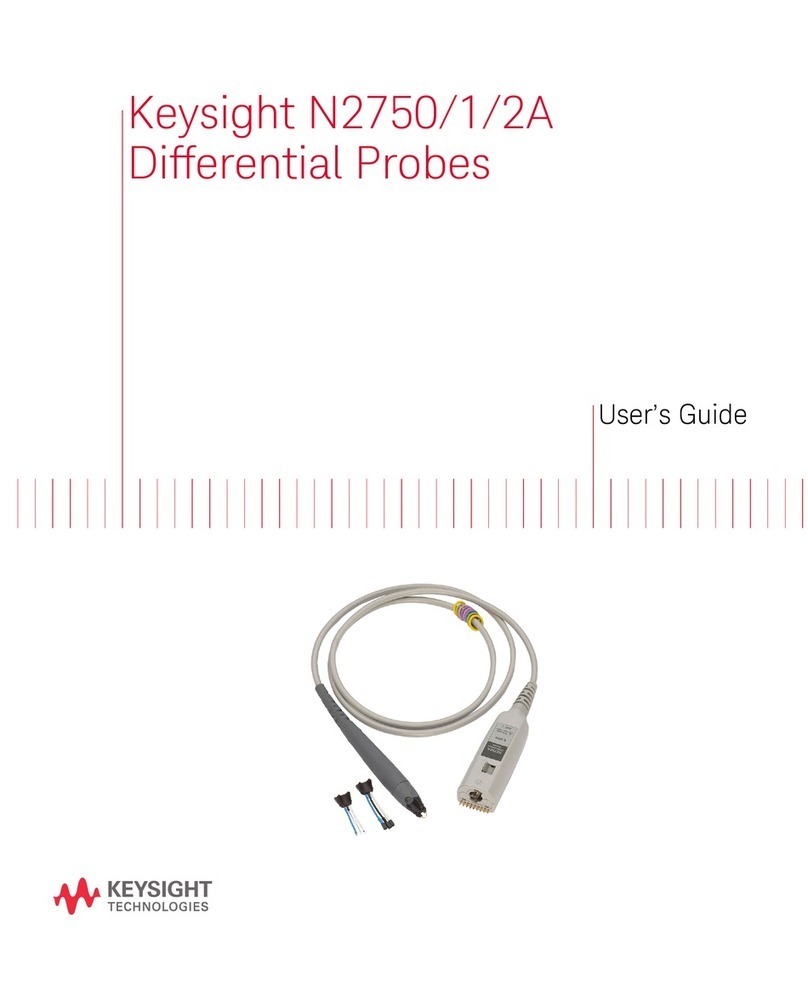
Keysight Technologies
Keysight Technologies N2750A user guide
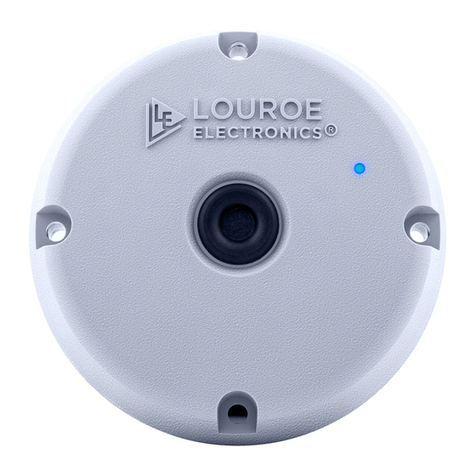
Louroe Electronics
Louroe Electronics DIGIFACT A DATASHEET AND QUICK START GUIDE
